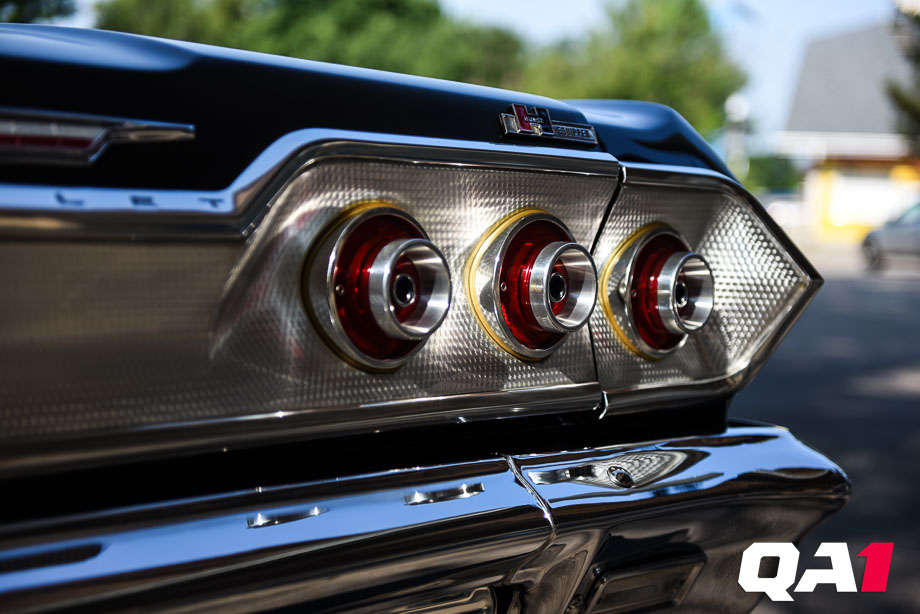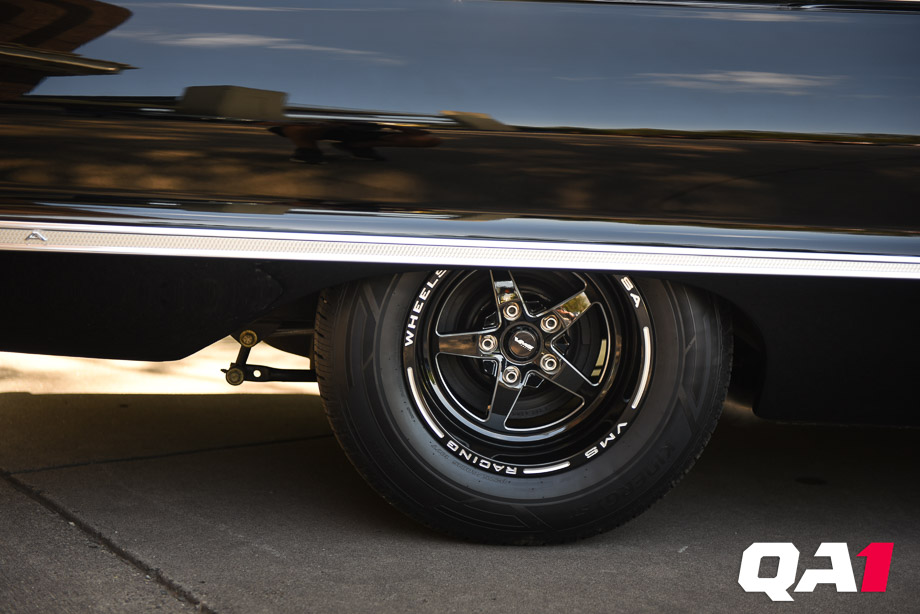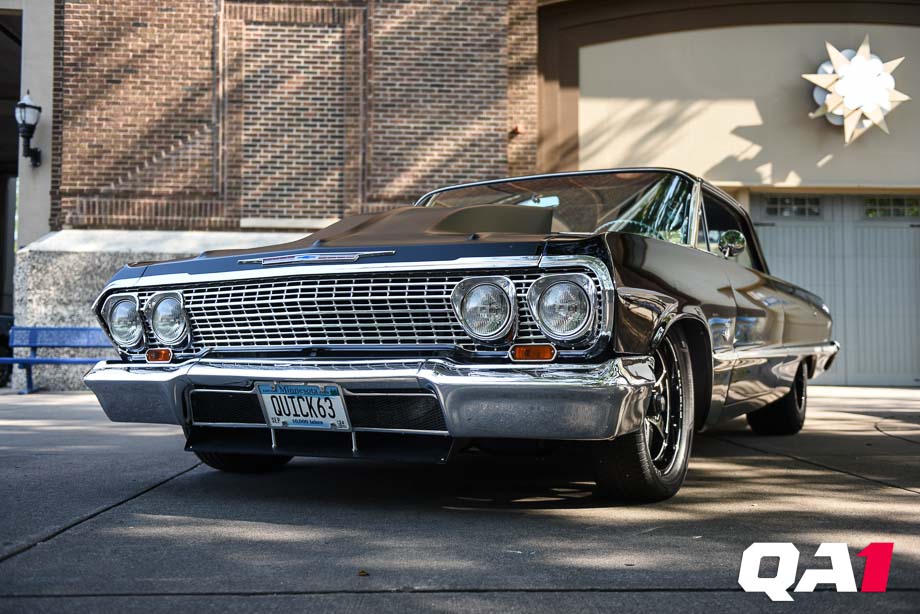This 1963 Chevrolet Impala Is A Racey Head-Turner
The Chevrolet Impala nameplate is an icon of American automotive history, and Jeff Teig's meticulously restored and modified version is one of the finest examples of these GM classics. Acquired from a salvage yard in South Dakota in 1991, Jeff’s Impala has undergone an impressive transformation, blending classic aesthetics with modern performance features for a package that is show-quality with racey styling.
SHOP QA1 IMPALA SUSPENSION UPGRADES
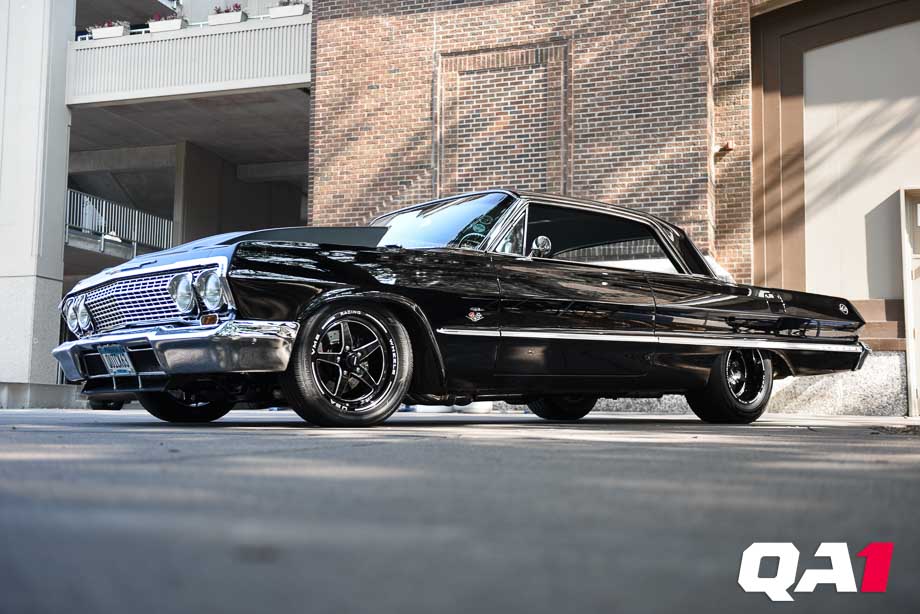
THE INITIAL DISCOVERY AND RESTORATION
Jeff’s journey with his 1963 Chevrolet Impala began in an unexpected setting—a salvage yard where the car had sat for 14 years. Jeff traded a couple of vintage toy tractors and $75 for the vehicle, setting the stage for an ambitious restoration project. After securing the necessary title transfer from South Dakota to Minnesota, Jeff officially became the owner, and set off to transform this neglected classic.
Originally, the Impala was a basic 2-door hardtop with Cordovan Brown paint, an Ermine White top, and a Faun interior. Jeff picked it up with minimal options: a padded dash, a 283 cubic inch small block Chevy V8 engine, power steering, and a Powerglide transmission. Over the next 16 years, Jeff collected new old stock (NOS) trim pieces, which he had re-dipped and anodized, along with restoring some of the original trim and grille.
CUSTOMIZATION AND PERFORMANCE ENHANCEMENTS
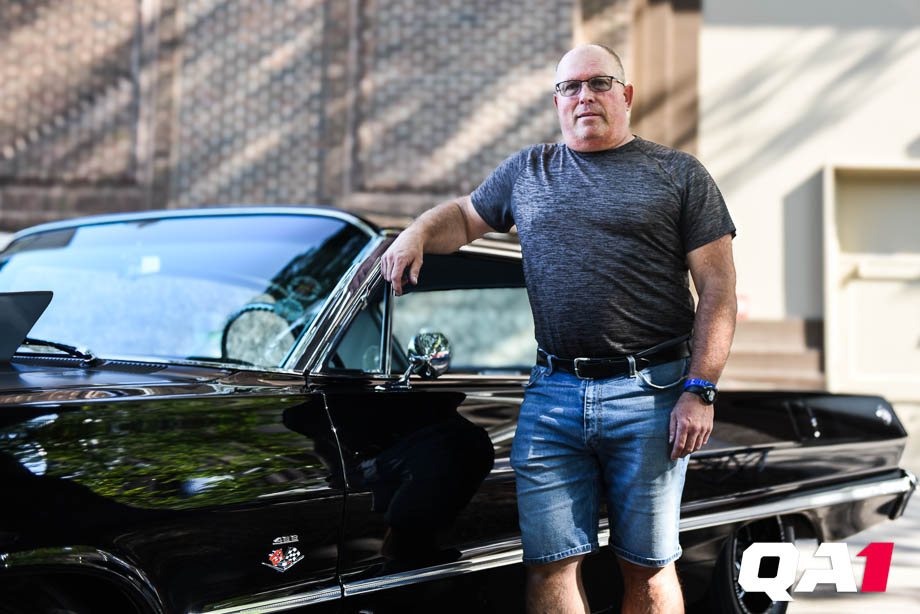
Jeff's vision included transforming it into a Super Sport (SS) clone. He added a factory tilt column, air conditioning, an SS radio delete plate, bucket seats, a console, and the complete SS trim package. To accommodate 13-inch wide rear tires and a 3-inch exhaust over the rear axle, the rear frame wheel well body mounts were relocated inside the frame.
Given the limited availability of aftermarket suspension and driveline performance parts at the time, Jeff rebuilt the factory front suspension, installed QA1 single adjustable coilover shocks and springs from a Camaro application, and converted the factory power steering to a GM metric power steering box. Additionally, a spindle swap enabled the use of 12-inch slotted and drilled disc brakes, complemented by a hydro-boost brake system and large sway bars both front and rear.
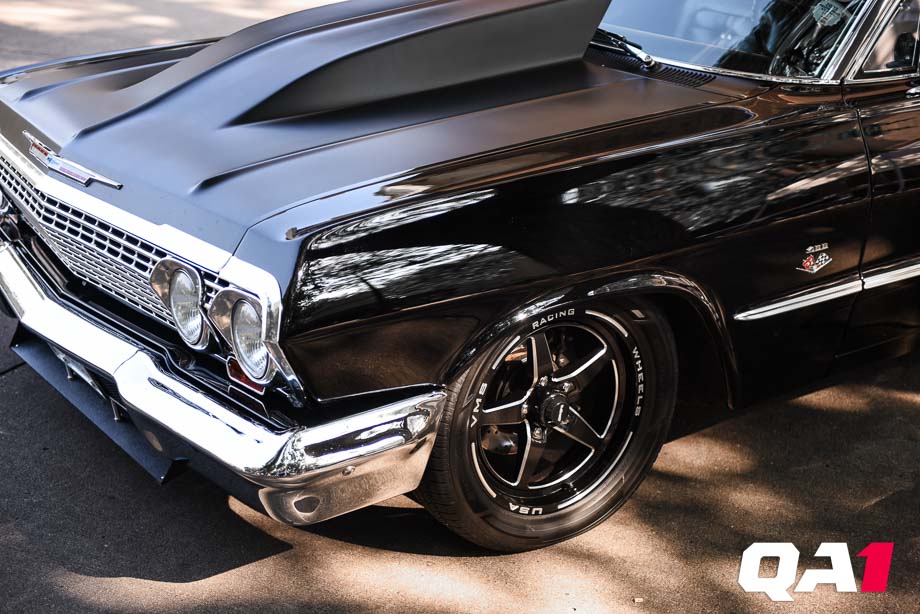
Jeff also designed a custom 4-link rear suspension with QA1 coilovers and a narrowed 9-inch Ford rearend with Moser axles. A 1,000-horsepower-capable two-piece telescopic driveshaft with a large billet center hanger bearing was installed, along with a new Tremec TKO 600 Road Race version transmission.
Jeff has been a fan of QA1 through and through, utilizing double adjustable coilovers on his Chevrolet S10 project, along with an upcoming Tri-Five Chevy he's assembling.
THE ENGINE AND FABRICATION DETAILS
At the heart of this machine is a 475 cubic inch big-block Chevrolet engine, which was assembled using a circa-1973 GM two-bolt main 454 engine block and cylinder heads. Jeff outfitted the power plant with a fully built bottom end and valvetrain, and a 750 cfm carburetor on top. A mandrel-bent stainless steel exhaust system is paired with Magnaflow mufflers. The underside of the body and the entire frame were sandblasted, sealed, and painted to ensure longevity and durability.
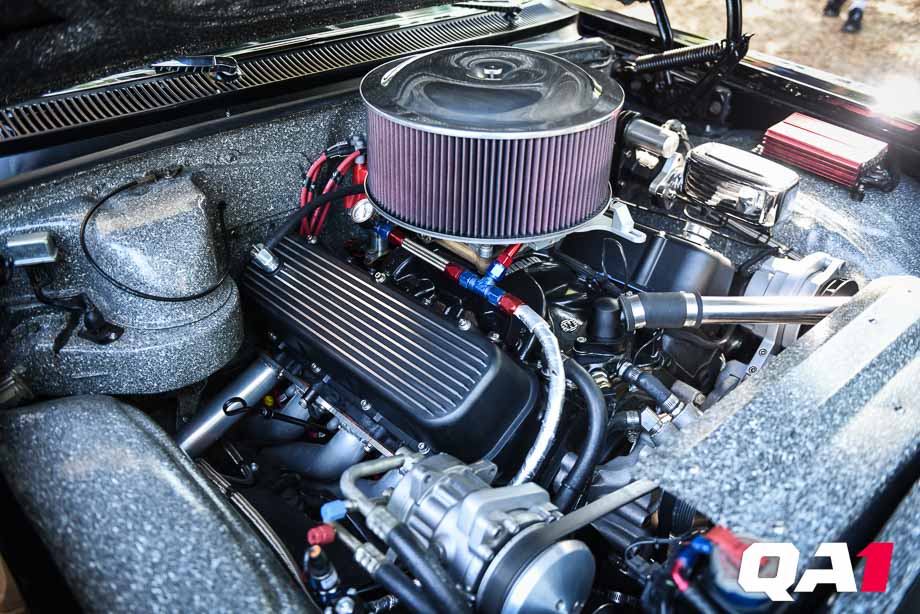
Bodywork included minor rust repair on the front fender bottoms, trunk area, and one floor brace. A fiberglass hood scoop was riveted and fiberglassed into place, followed by a base-clear black paint job performed at a local body shop in 2004. The car was color sanded and buffed to a mirror finish, and rest of the restoration was complete.
INTERIOR, ELECTRONICS, AND FURTHER MODIFICATIONS
The interior received a custom steel dash insert to house Autometer gauges, and the factory air conditioning was modified to clear the tall valve covers of the big block engine while accommodating a modern A/C compressor and 134A refrigerant. Jeff designed a custom serpentine belt accessory drive system and a custom offset power brake mount for the GM Hydra Boost unit. A custom aluminum radiator was also fabricated to fit with the modern power steering box.
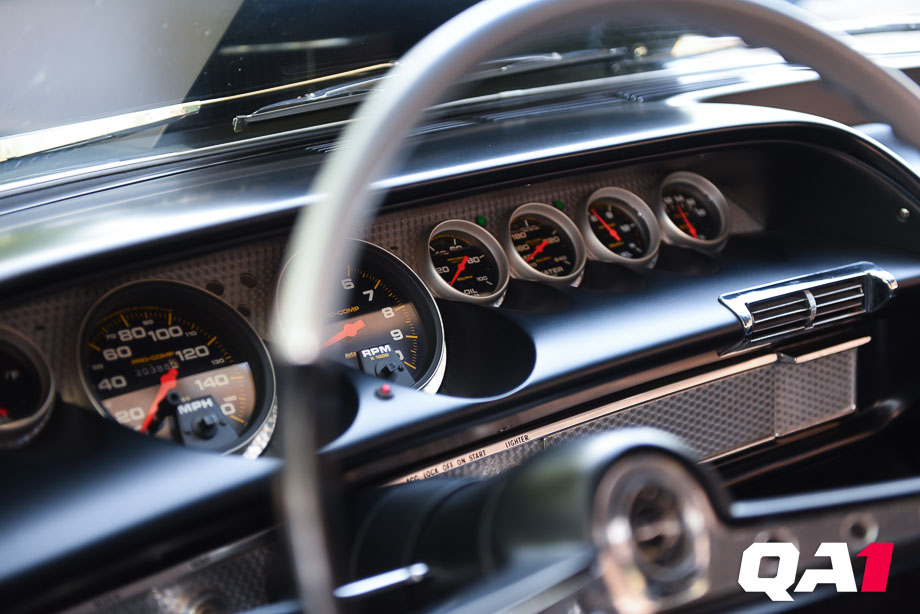
Jeff had second, third, and fourth gears in the transmission face-plated, boosting the reliability and shifting performance significantly.
Further refinements included replacing the power steering box, creating new power steering and hydro-boost hoses, installing electric fans with an adjustable controller, and adding a fused power distribution block in the engine compartment. Modifications to the front bumper support crossmember and the addition of a small air deflector improved airflow into the radiator, enhancing cooling system efficiency and reducing under-hood temperatures.
To address vapor lock issues during hot weather, Jeff converted the fuel system to a return style with a new regulator, return line, and electric fuel pressure gauge. Non-functional components, such as the cruise control system and certain under-dash gauges, were removed to streamline the interior.
FINAL TOUCHES AND ENHANCEMENTS
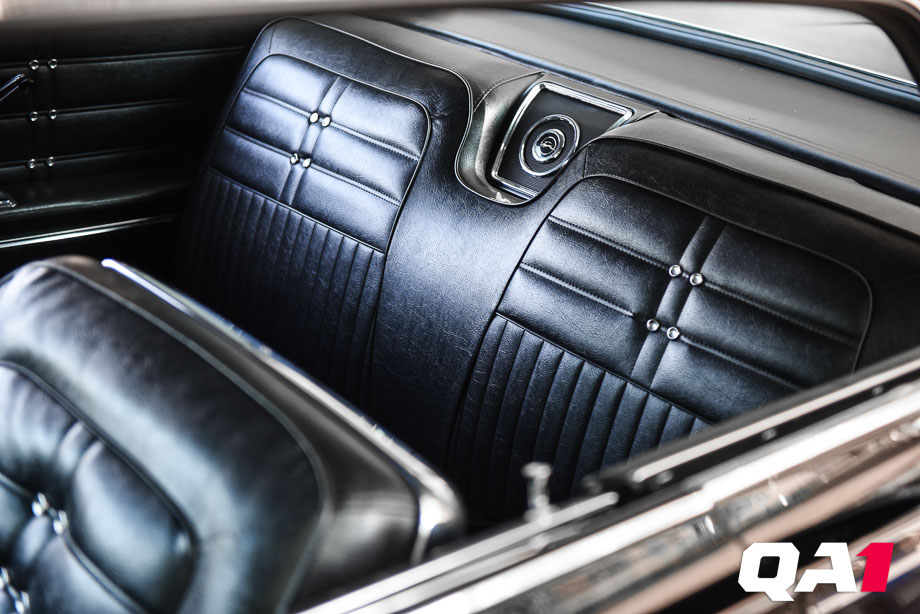
Jeff’s attention to detail extended to the interior, where he installed cup holders, a power port with USB connections, and a new shifter boot and shift ball to enhance the creature comforts. The rear axle bearings and seals were replaced, and the center section was rebuilt with new 3.50 micro-polished gears and a Daytona pinion support.
A new set of VMS racing wheels and Hankook tires completed the vehicle’s exterior enhancements, ensuring that the Impala not only performed exceptionally but also looked the part.
Jeff's 1963 Chevrolet Impala is more than just a restored classic; it’s been a labor of love; saved from a salvage yard and given the attention it deserves to transform it a head-turner.
